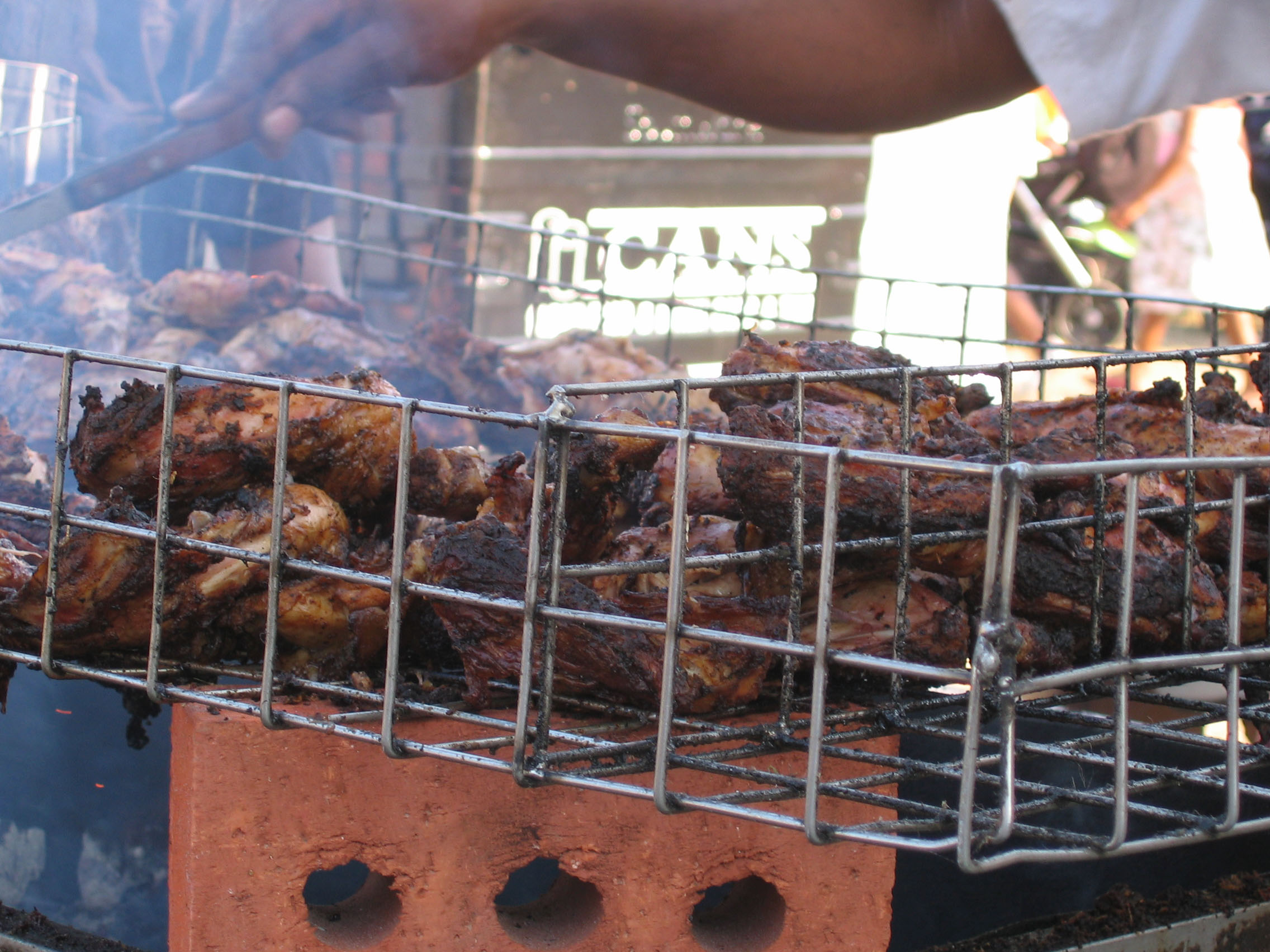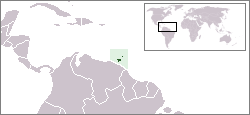|
Asham (dessert)
Asham is a corn-based Caribbean dessert. It is thought to have originated in Africa, with the name ''asham'' derived from the Akan word ''o-sĭám'' meaning "parched and ground corn". Other names include Brown George (Jamaica), asham (Grenada), ashum (Antigua), sansam and chilli bibi (Trinidad), caan sham, casham and kasham (Belize). It is made by shelling dry corn, parching it, and then grinding it finely. Salt or sugar can then be added to the mixture and it can be eaten dry or with water. See also * Cocktion *Duckunoo * List of desserts A dessert is typically the sweet Course (food), course that, after the entrée and main course, concludes a meal in the culture of many countries, particularly western world, Western culture. The course usually consists of sweet foods, but may ... References {{Reflist Caribbean cuisine Jamaican desserts Trinidad and Tobago cuisine Antigua and Barbuda cuisine Grenadian cuisine Belizean cuisine Maize desserts ... [...More Info...] [...Related Items...] OR: [Wikipedia] [Google] [Baidu] |
Dessert
Dessert is a course (food), course that concludes a meal; the course consists of sweet foods, such as cake, biscuit, ice cream, and possibly a beverage, such as dessert wine or liqueur. Some cultures sweeten foods that are more commonly umami, savory to create desserts. In some parts of the world, there is no tradition of a dessert course to conclude a meal. Historically, the dessert course consisted entirely of foods 'from the storeroom' (''de l’office''), including fresh, stewed, preserved, and dried fruits; nuts; cheese and other dairy dishes; Cookie, dry biscuits (cookies) and wafers; and ices and Ice cream, ice creams. Sweet dishes from the kitchen, such as freshly prepared pastries, meringues, custards, puddings, and baked fruits, were served in the Entremet, entremets course, not in the dessert course. By the 20th century, though, sweet entremets had come to be included among the desserts. The modern term ''dessert'' can apply to many sweets, including fruit, custard ... [...More Info...] [...Related Items...] OR: [Wikipedia] [Google] [Baidu] |
Belize
Belize is a country on the north-eastern coast of Central America. It is bordered by Mexico to the north, the Caribbean Sea to the east, and Guatemala to the west and south. It also shares a maritime boundary with Honduras to the southeast. Part of the Caribbean region, Belize is a member of the Caribbean Community (CARICOM) and the Commonwealth Caribbean, the historical British West Indies. The Maya civilization spread into the area of Belize between 1500 BCE and 300 CE and flourished until about 1200. European contact began in 1502–04 when Christopher Columbus sailed along the Gulf of Honduras. European exploration was begun by English settlers in 1638. Spanish Empire, Spain and Kingdom of Great Britain, Britain both laid claim to the land until Britain defeated the Spanish in the Battle of St. George's Caye (1798). It became British Honduras, a British colony in 1840, and a Crown colony in 1862. Belize achieved its independence from the United Kingdom on 21 September ... [...More Info...] [...Related Items...] OR: [Wikipedia] [Google] [Baidu] |
Grenadian Cuisine
Grenada's French colonists brought their culture, as did the African slaves they brought across the Atlantic for agricultural work. Indians have also influenced the island culture in more recent years. With the passing of the Slave Trade Act 1807 by the British Parliament and the subsequent abolishing of slavery, indentured labor from India was procured at a very large scale. The first ship, named the ''Maidstone'', departed from Calcutta, India on January 27, 1857, and arrived a few months later on May 1. In all, 3,206 East Indians arrived in Grenada by 1885. Only 380 of them returned to India. The Indians made many contributions to Grenada. Indian Arrival Day was celebrated in 2007 on the 150th anniversary, for the first time since the centenary celebration in 1957. The Indians later on assimilated with the existing Africans, Europeans and other ethnicities intermarrying with each other. This very much influenced the culture and cuisine of Grenada. Cuisine The nationa ... [...More Info...] [...Related Items...] OR: [Wikipedia] [Google] [Baidu] |
Antigua And Barbuda Cuisine
Antigua and Barbuda cuisine refers to the cuisines of the Caribbean islands Antigua and Barbuda. The national dish is cou-cou, fungee (pronounced "foon-jee") and pepperpot."Antigua & Barbuda National Dish & Recipe." Accessed July 2011. [...More Info...] [...Related Items...] OR: [Wikipedia] [Google] [Baidu] |
Trinidad And Tobago Cuisine
Trinidad and Tobago cuisine is influenced by Indian-South Asian, West African, Creole, European, North American, Chinese, Amerindian, Latin American, and Levantine culinary styles. Main meals Breakfast dishes Popular breakfast foods include doubles, made with two '' baras'' (flat fried dough) and curried ''channa'' (chickpeas). They are usually served with toppings such as pepper sauce, kuchela, tamarind, mango, pommecythere, cucumber, and bandhaniya chutneys. Doubles are one of the most popular breakfast foods eaten on the islands, but are commonly consumed throughout the day. A traditional Indo-Trinidadian and Tobagonian breakfast consists of ''sada roti'', a type of unleavened bread made with flour, baking powder and water. The dough is rolled out and cooked on flat, cast-iron skillet called a '' tawa''. The cooked dough is cut into quarters and served with a variety of fried vegetables, tarkaris or chokhas. Sada rotis are usually eaten with ''baigan chokha ... [...More Info...] [...Related Items...] OR: [Wikipedia] [Google] [Baidu] |
Jamaican Desserts
Jamaican cuisine includes a mixture of cooking techniques, flavours and spices influenced by Amerindian, West African, Irish, English, French, Portuguese, Spanish, Indian, Chinese and Middle Eastern people who have inhabited the island. It is also influenced by indigenous crops, as well as crops and livestock introduced to the island from Mesoamerica, Europe, tropical West Africa and Southeast Asia— which are now grown locally. A wide variety of seafood, tropical fruits and meats are available. Some Jamaican dishes are variations of cuisines brought to the island from elsewhere, which are often modified to incorporate local produce and spices. Many others are novel or Creole dishes, created from a fusion of dishes, techniques and ingredients from different cultures— which have developed locally over time. Popular Jamaican dishes include curry goat, fried dumplings, brown stew (oxtail), ackee and saltfish and jerk. Jamaican patties along with various pastries, breads a ... [...More Info...] [...Related Items...] OR: [Wikipedia] [Google] [Baidu] |
List Of Desserts
A dessert is typically the sweet Course (food), course that, after the entrée and main course, concludes a meal in the culture of many countries, particularly western world, Western culture. The course usually consists of sweet foods, but may include other items. The word "dessert" originated from the French language, French word ''desservir'' "to clear the table" and the negative of the Latin language, Latin word ''servire''. There are a wide variety of desserts in western cultures, including cakes, cookies, biscuits, gelatins, pastry, pastries, ice creams, pies, puddings, and candy, candies. Fruit is also commonly found in dessert courses because of its natural sweetness. Many different cultures have their own variations of similar desserts around the world, such as in Russia, where many breakfast foods such as blini, oladyi, and syrniki can be served with honey and jam to make them popular as desserts. By type Brand name desserts A * Angel Delight B * Bird's Custard * Bompa ... [...More Info...] [...Related Items...] OR: [Wikipedia] [Google] [Baidu] |
Duckunoo
Duckunoo or duckanoo, also referred to as tie-a-leaf, blue drawers (draws), dokonon (in French Guiana), and dukunou (in Haiti) is a dessert in Jamaica, Haiti, Antigua and Barbuda, Belize, Saint Vincent and the Grenadines, St Vincent, French Guiana and some other islands in the Lesser Antilles. It is a variation of tamale, which originated in Mesoamerica as early as 8000 to 5000 BC. The Caribbean cuisine, Caribbean dish which has Amerindian and African cuisine, African influences, is typically made from batata (sweet potato), coconut, cornmeal, spices like cinnamon and nutmeg, brown sugar and vanilla, all tied up in a banana leaf. It is then cooked in boiling water. History Duckunoo originated in the Caribbean and is closely related to the Mesoamerican 'tamale de dulce' or 'tamal dulce' (''sweet tamale)'', which is a popular indigenous dessert in the Americas, especially in Mexico. It is the sweet variation of the more popular savoury tamale, which may date from around 100 AD, acc ... [...More Info...] [...Related Items...] OR: [Wikipedia] [Google] [Baidu] |
Cocktion
Cocktion is a dessert in Jamaican cuisine made from parched corn and sugar rolled into balls and sometimes colored. Jamaican Gleaner See also * List of Jamaican dishes This is a list of Jamaican dishes and foods. Jamaican cuisine includes a mixture of cooking techniques, ingredients, flavours, spices and influences from the Taínos, Jamaica's indigenous people, the Spanish, Portuguese, French, Scottish, Ir ... References Maize desserts Jamaican desserts {{Jamaica-cuisine-stub ... [...More Info...] [...Related Items...] OR: [Wikipedia] [Google] [Baidu] |
Parched Grain
Parched grain is grain that has been cooked by dry roasting. It is an ancient foodstuff and is thought to be one of the earliest ways in which the hunter gatherers in the Fertile Crescent ate grains. Historically, it was a common food in the Middle East, as attested by the following Bible quotes: *"On the day after the Passover, on that very day, they ate some of the produce of the land, unleavened cakes, and parched grain." *"Now Boaz said to her at mealtime, 'Come here, and eat of the bread, and dip your piece of bread in the vinegar.'" So she sat beside the reapers, and he passed parched grain to her; and she ate and was satisfied, and kept some back." It is known in Hebrew as קָלִי (''qālî''). The grain has the same length of the normal grain, although somewhat thinner and darker with a green shade. It is served as a casserole hot dish, cooked with morsels of meat or poultry. Use as a camp ration A variety of parched grains have been used historically as a camp ra ... [...More Info...] [...Related Items...] OR: [Wikipedia] [Google] [Baidu] |
Trinidad
Trinidad is the larger, more populous island of the Republic of Trinidad and Tobago, the country. The island lies off the northeastern coast of Venezuela and sits on the continental shelf of South America. It is the southernmost island in the Caribbean. With an area of , it is also the fifth-largest in the Caribbean. Name The original name for the island in the Arawakan languages was which meant "Land of the Hummingbird". Christopher Columbus renamed it ('The Island of the Trinity'), fulfilling a vow he had made before setting out on his third voyage. This has since been shortened to ''Trinidad''. Indo-Trinidadians called the island चीनीदत्त , 𑂒𑂲𑂢𑂲𑂠𑂞𑂹𑂞 , , ''Chinidat'' or ''Chinidad'' in Trinidadian Hindustani which translated to the land of sugar. The usage of the term goes back to the 19th century when recruiters from India would call the island ''Chinidat'' as a way of luring workers into indentureship. On Tuesday, 31 Jul ... [...More Info...] [...Related Items...] OR: [Wikipedia] [Google] [Baidu] |
Sugar
Sugar is the generic name for sweet-tasting, soluble carbohydrates, many of which are used in food. Simple sugars, also called monosaccharides, include glucose Glucose is a sugar with the Chemical formula#Molecular formula, molecular formula , which is often abbreviated as Glc. It is overall the most abundant monosaccharide, a subcategory of carbohydrates. It is mainly made by plants and most algae d ..., fructose, and galactose. Compound sugars, also called disaccharides or double sugars, are molecules made of two bonded monosaccharides; common examples are sucrose (glucose + fructose), lactose (glucose + galactose), and maltose (two molecules of glucose). White sugar is almost pure sucrose. In the body, compound sugars are hydrolysed into simple sugars. Longer chains of monosaccharides (>2) are not regarded as sugars and are called oligosaccharides or polysaccharides. Starch is a glucose polymer found in plants, the most abundant source of energy in human foo ... [...More Info...] [...Related Items...] OR: [Wikipedia] [Google] [Baidu] |






